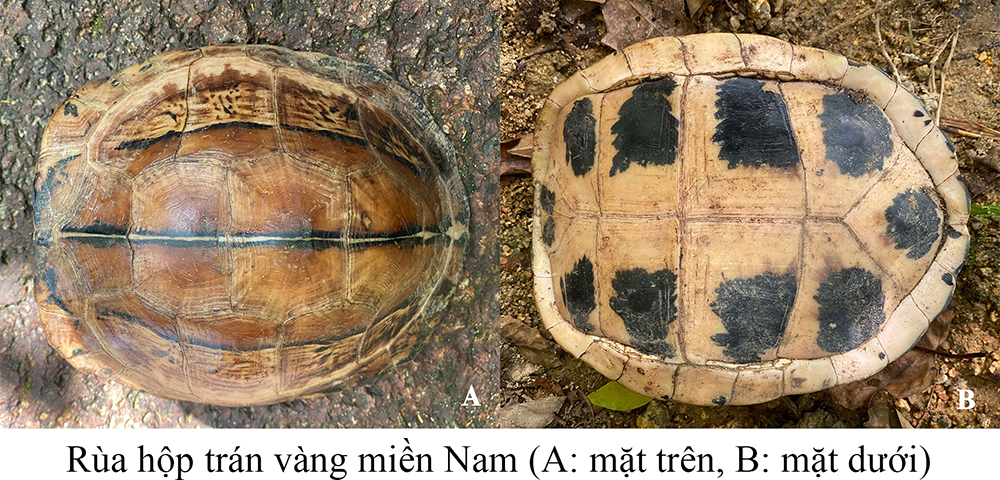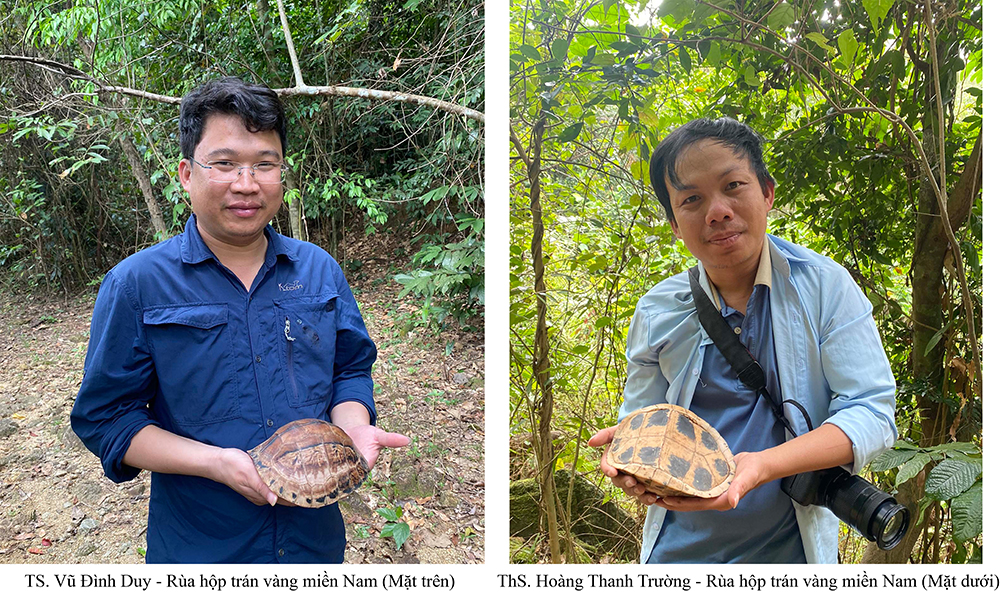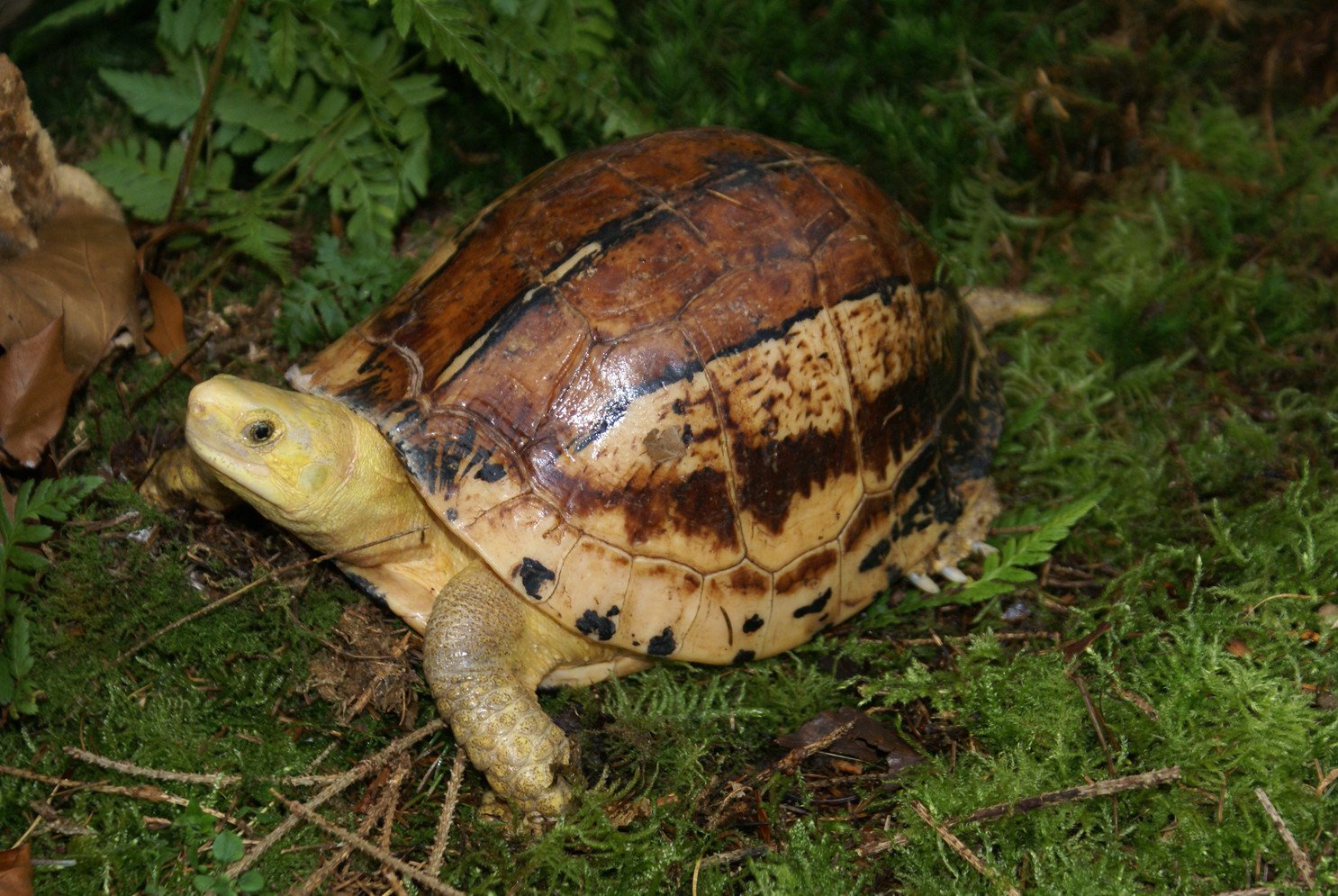A highly endangered turtle species recorded in Deo Ca Special Use Forest, Phu Yen Province, Vietnam
19/05/2024According to the Wildlife Conservation Society Vietnam (WCS Vietnam), Southeast Asia is home to the most diverse range of terrestrial and freshwater turtles in the world, with over 90 species, representing more than 25% of the known species globally. Vietnam alone is home to 25 species of terrestrial and freshwater turtles, including two endemic species: the Southern Vietnamese box turtle (Cuora picturata) and the Vietnamese pond turtle or Annam leaf turtle (Mauremys annamensis).
In January 2024, a research team from the Institute of Tropical Ecology, Joint Vietnam-Russia Tropical Science and Technology Research Center, and other collaborating units conducted a survey as part of the project “Research on the current status and propose management and conservation solutions for biodiversity in the Deo Ca - Hon Vong Phu Area, Phu Yen Province.” The survey was carried out in three areas: Deo Ca Special Use Forest, Tay Hoa Protection Forest, and Song Hinh Protection Forest. During the survey along the Hao Son - Suoi Sau route (Deo Ca Special Use Forest), scientists recorded the presence of the Southern Vietnam Box Turtle (Cuora picturata), which weighs about 1 kg. This turtle is extremely rare and endemic to the Phu Yen region and neighboring provinces.
The Southern Vietnam box turtle, also known as the Vietnamese box turtle, belongs to the family Geoemydidae and is mainly found in Phu Yen, Khanh Hoa, Binh Dinh, and Dak Lak provinces.

The carapace (upper part) and the plastron (lower part) of the Southern Vietnamese box turtle (Cuora picturata).
The external characteristics of the species include the following details:
- Marginal scutes: The marginal scutes on the sides are curved downward.
- Carapace: The carapace is light brown with a thin, bright stripe running along the middle of the vertebral scutes, bordered on both sides by thin black stripes.
- Lateral scutes: The upper part of the lateral scutes typically has a light brown or olive stripe, with black edging on the lower part. The underside of the lateral scutes is white, cream, or light brown, without dark patches but featuring small brown-black spots or marks.
- Marginal scutes (upper): The upper part of the marginal scutes is yellowish-brown with black spots.
- Plastron: The plastron can close completely with the carapace, lacking any notches at the rear. The plastral scutes are light yellow with large black spots.
- Head: The head is slightly pointed at the front with a short snout, and is light yellow or reddish-brown with small dark spots, typically lacking dark stripes on the sides of the snout.
- Chin and throat: These areas are yellow or cream-colored.
- Limbs and tail: The limbs and tail are gray or light yellow.

Members of the research team with the Southern Vietnamese box turtle (Cuora picturata).
Ordinary turtles can only retract their heads and limbs into their shells, still leaving some parts of their bodies exposed. However, the Southern Vietnam Box Turtle has a unique and distinctive feature: it can transform itself into a completely enclosed box by retracting its head and limbs and "closing the lid." This makes it invulnerable, as no part of its body is left exposed. The "lid" is formed by two movable parts of the shell, the carapace (upper part) and the plastron (lower part). This ability to seal themselves completely is a characteristic specific to box turtles, which other turtles do not possess. When tightly closed, even the most skillful predators cannot reach the soft parts of the body that are securely hidden inside.

The Southern Vietnamese box turtle (Cuora picturata).
(Source: https://cuora.org/cuora-picturata).
According to the International Union for Conservation of Nature (IUCN) Red List (2023), the Southern Vietnam box turtle is classified as Critically Endangered (CR), with an estimated population of 3,000 to 10,000 individuals in the wild. In Vietnam, the population of this species is rapidly declining due to habitat loss and poaching. It is estimated that around 50% of the Southern Vietnam Box Turtle population is decreasing, severely impacting the ecosystem and posing a risk of extinction. The species is listed under Group IB of Decree 84/2021/ND-CP, which includes forest animals that are strictly prohibited from being exploited or used for commercial purposes.
To conserve and protect this particularly rare species, it is essential to implement comprehensive and effective measures such as habitat protection, public awareness campaigns to prevent poaching and illegal trade, and strict enforcement of both national and international wildlife protection regulations./.
Authors: TS. Lê Xuân Đắc1, TS. Vũ Đình Duy1, Đinh Thế Dũng1, GS. TS. Nguyễn Đăng Hội1, ThS. Hoàng Thanh Trường2, TS. Nikolay A. Poyarkov3
1Institute of Tropical Ecology, Vietnam - Russia Tropical Center
2Forest Science Institute of Central Highlands and South of Central Vietnam
3Moscow State University, Russian Federation
References:
1. Decree 84/2021-ND-CP dated September 22, 2021, by the Government of the Socialist Republic of Vietnam.
2. https://cuora.org/cuora-picturata.
3. https://iucnredlist.org/species/163463/123815952.
4. https://loainguycap.ceid.gov.vn/species/30.
5. https://nbca.gov.vn/doi-tuong-bao-ton/loai-nguy-cap-quy-hiem.









